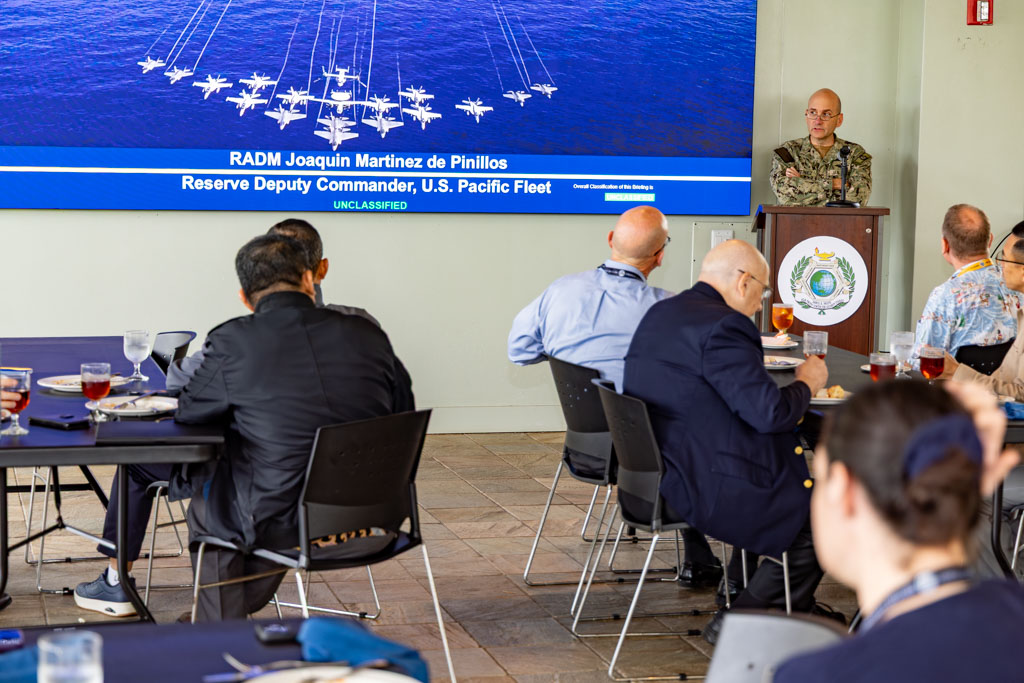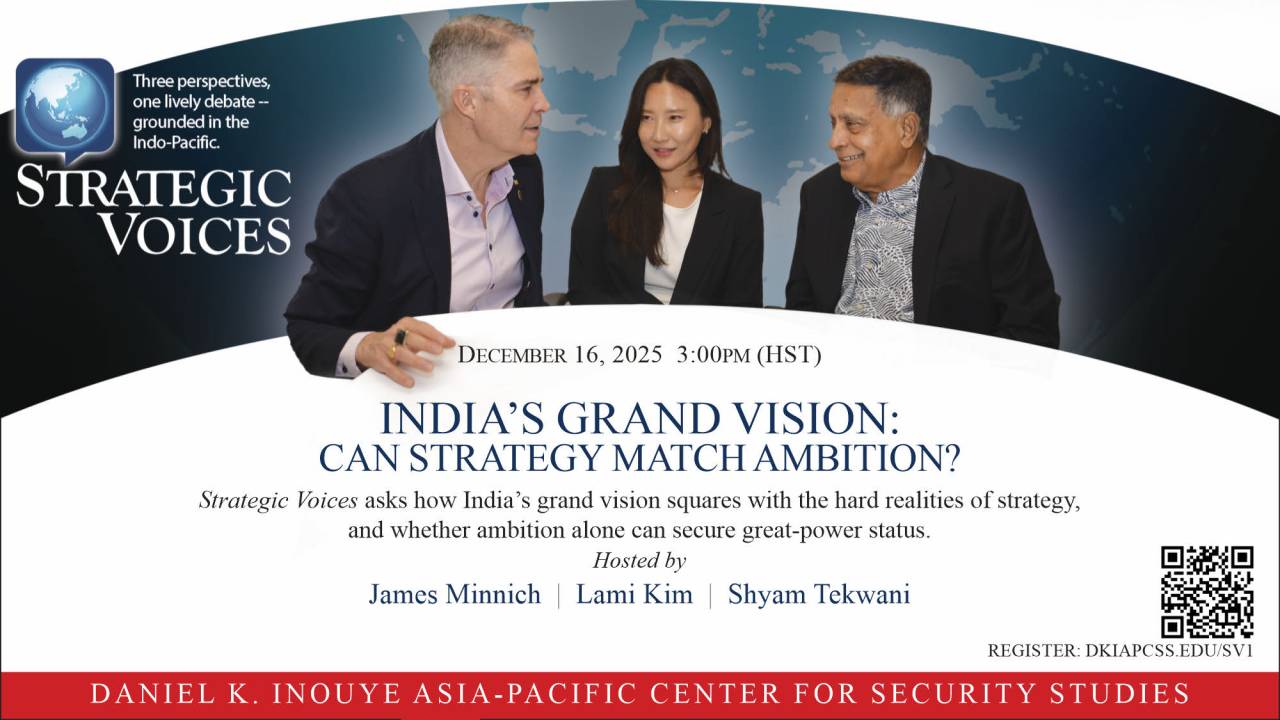By Dr. James M. Minnich
November 13, 2024
The Indo-Pacific region is a critical arena for global power competition, not just on the surface but also beneath the waves. Episode 31 of Dialogue | “Indo-Pacific Underwater Competition” brought together regional experts to discuss this complex underwater struggle, which encompasses expanding submarine fleets, the protection of critical infrastructure, and the exploration of deep-sea resources.
Experts included DKI APCSS Professor Dr. Lukas Filler; RADM (Ret) Dr. Duk-ki Kim; former Commissioner of the Korea Coast Guard Dr. Suk Kyoon Kim; Delhi Policy Group Research Associate Divya Rai, and Commander Seong-Jin Cho of the Korean Navy.
China’s Undersea Dominance
China’s “active defense” strategy in the Indian Ocean, as described by Dr. Lukas Filler, involves leveraging autonomous underwater vehicles (AUV) and sensor networks to discreetly influence the region and condition other nations to defer to its interests. This approach allows China to secure its undersea dominance while minimizing overt aggression. This has prompted a response from other nations in the region, particularly in East Asia, where there is a growing recognition of the need to enhance Maritime Domain Awareness (MDA) capabilities. Dr. Suk Kyoon Kim highlighted the urgency of shifting focus from surface monitoring to the seabed, where China has invested heavily in advanced surveillance systems.
Securing Critical Infrastructure
India’s strategic location makes it a vital hub for submarine cables, linking various regions. While India has taken steps to secure this critical infrastructure, including joining the Quad’s “Partnership for Cable Connectivity and Resilience,” Divya Rai points out that challenges remain in coordinating efforts at multiple levels. This highlights the need for effective legislation and international collaboration to protect these vital information arteries.
The Silent Arms Race and Technological Advancement
The Indo-Pacific has witnessed a surge in submarine proliferation, with nations recognizing the strategic advantages of these stealthy vessels. China’s expanding submarine fleet, including nuclear-powered vessels, has intensified competition beneath the sea. This “silent arms race” necessitates robust communication channels and crisis management mechanisms to prevent unintended escalation. Further complicating this competition is the rapid advancement of technology. As Commander Seong-Jin Cho emphasized, technological superiority, particularly in underwater drones and unmanned vehicles, is becoming increasingly decisive in seabed warfare.
Cooperation Amidst Competition
Despite the escalating competition, the experts acknowledged the potential for cooperation. Multilateral agreements on maritime security, joint exercises, and information sharing can help manage tensions and foster stability. Collaborative efforts in submarine operations and MDA are crucial for navigating this complex underwater domain.
Conclusion
The Indo-Pacific’s underwater realm presents both opportunities and risks. The choices nations make regarding competition and cooperation will shape the region’s security landscape for years to come. By fostering dialogue and collaboration, while also investing in essential capabilities, nations can ensure a more stable and secure future for this critical domain.










Leave A Comment